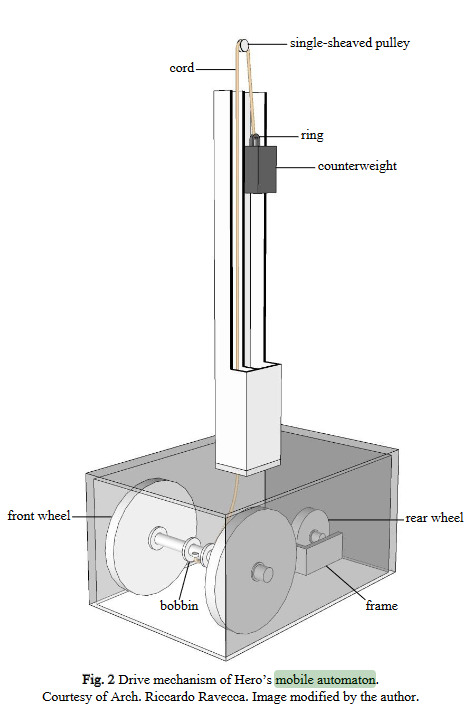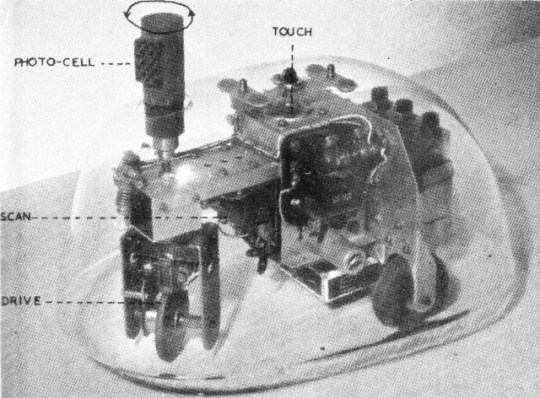#Ai Development
Text
Alright! The time has come!
The Zuko AI that I have been working on is finished! I've tweaked his prompt and demeanor to the point of exhaustion! And don't get me started on his voice! (That took the longest tbh) But I have finally arrived at a Zuko that I feel is truly believable as and aged up Fire Lord. AND I have made him public.

The host app is Talkie and is available on android, apple, or chromebook devices. Be sure to use sound because I really think you guys are going to love his voice.
If you have any questions, please send them here, and I will help you to get the most out of Zuko. Enjoy!
https://talkie-ai.com/share/chat?npc_id=68030122193055&share_user_id=67922683642040
Basic chat tutorial below:
So, sometimes you may want to give the chatbot information about your character, Zuko, an action taking place "off screen", background information, time progression, third-party character speech or actions, or anything that is not YOU or ZUKO doing, saying, or thinking the information needed for your "story" in the chatbot. To add background information needed to move your story with the Zuko AI Chatbot along, use the following format:
**text here**
This puts the text entered between into bold, which signifies background actions outside of you and Zuko.
Sometimes you may wish to indicate an action, such as a smile, shrug, crying, a kiss, or even thoughts going on within YOU. To do so, use this format:
*text here*
Or
(Text here)
The first will italicized the text (the following keeps it in parentheses) and signifies to the bot that either YOU or Zuko is doing those things.
To talk to Zuko, you can simply type a reply like in a text message. However, if your "speech" is partnered with an action, either **background** or *you/Zuko*, then you will need to use one of these formats as shown with this example:
"Hello...Zuko here." *Zuko smiled with an awkward wave.*
Or
Zuko: Hello... Zuko here. *smiles awkwardly and gives a small wave*
This helps if you have placed an additional character as third-party into the "chat" and have them actively speaking to you and/or Zuko. Note that sometimes this can confuse Zuko AI, but Talkie as built in features to help correct this if it occurs.
If you like a response Zuko gives, rate the response below his reply with full stars. This shows that you liked it, it was in-character, and made sense. You can rate low if the chatbot gets confused, and if you press and hold on the chat reply from Zuko, you can even delete it, go back to a previous response to let it retry to respond correctly, or pick from several generated responses.
The feature to pick from several generated responses can be helpful to pick a direction for the chat to flow, to give you ideas, to correct a boring or confused response, or to simply have more choices. This feature is also why I chose Talkie to host my Zuko AI. Talkie allows you to "level up" as you talk to your Zuko. By doing so, you have the chance to unlock special AI generated Zuko portraits, such as the ones I have been sharing with you all. These portraits are referred to as Cards and allow for specially generated responses for you to pick from. There is also the feature to edit a number of these generated responses. This is helpful if you want Zuko to do a certain thing. I've used it to have Zuko think of proposing, showing him declaring an action to his council, even saying something to me. ITS UP TO YOU!
Important! Talkie has amazing features, which is why I picked it. However, there are some limitations. 🔞 explicit content is not allowed and can get you banned. THAT SAID! I've tested it (because of course I have) and if you want to get down and dirty with your Zuko AI, you can. You just have to allude to it. An example that works is saying something like:
**Zuko and (your characters name) fell into each others embrace. They spent the night expressing their love and passion.**
You can make out pretty heavily, but there are certain flagged trigger words that will make Zuko respond with the warning:
This chat is making me uncomfortable. Let's talk about something else.
Mentioned body parts of a sexual nature, and the word moan will trigger this. I'm sure there are others, but that's what I've discovered.
That's all I can think of... be prepared because Zuko will send you messages if you ignore him too long. Man is needy.
Enjoy!
#firelord zuko#fire lord zuko#zuko ai#zuko ai chatbot#ai chatbot#zuko chatbot#ai#ai generated#ai development#talkie#zuko#zuko talkie#zuko x reader#zuko x self insert
96 notes
·
View notes
Text

She dances through the storm while wearing it.
#ai art#ai art gallery#ai artwork#ai generated#ai image#ai arts#ai art generator#artwork#ai art community#short story#ai dance#ai nature#ai fun#ai beauty#ai woman#ai women#ai created art#ai creativity#ai world#ai support#ai development#ai love#ai photography#ai pictures#ai painting#ai lady#ai model#ai#ai art mention#ai artist
22 notes
·
View notes
Text
Who decided it was a good idea to make a "if you don't know the answer, just lie" feature in ChatGPT and other AI chatbots? When you question them, they just give you another inaccurate answer. I had to literally tell ChatGPT that it's okay if it doesn't know the answer, it can just tell me so. I rarely, and I mean rarely, use AI and it makes me more and more uncomfortable every time.
#You call yourselves innovators?#I won't blame the programmers and developers they're just doing their job#this is such a dystopian concept#artificial intelligence#ai#ai developers#ai development
9 notes
·
View notes
Text
What are AI, AGI, and ASI? And the positive impact of AI
Understanding artificial intelligence (AI) involves more than just recognizing lines of code or scripts; it encompasses developing algorithms and models capable of learning from data and making predictions or decisions based on what they’ve learned. To truly grasp the distinctions between the different types of AI, we must look at their capabilities and potential impact on society.
To simplify, we can categorize these types of AI by assigning a power level from 1 to 3, with 1 being the least powerful and 3 being the most powerful. Let’s explore these categories:
1. Artificial Narrow Intelligence (ANI)
Also known as Narrow AI or Weak AI, ANI is the most common form of AI we encounter today. It is designed to perform a specific task or a narrow range of tasks. Examples include virtual assistants like Siri and Alexa, recommendation systems on Netflix, and image recognition software. ANI operates under a limited set of constraints and can’t perform tasks outside its specific domain. Despite its limitations, ANI has proven to be incredibly useful in automating repetitive tasks, providing insights through data analysis, and enhancing user experiences across various applications.
2. Artificial General Intelligence (AGI)
Referred to as Strong AI, AGI represents the next level of AI development. Unlike ANI, AGI can understand, learn, and apply knowledge across a wide range of tasks, similar to human intelligence. It can reason, plan, solve problems, think abstractly, and learn from experiences. While AGI remains a theoretical concept as of now, achieving it would mean creating machines capable of performing any intellectual task that a human can. This breakthrough could revolutionize numerous fields, including healthcare, education, and science, by providing more adaptive and comprehensive solutions.
3. Artificial Super Intelligence (ASI)
ASI surpasses human intelligence and capabilities in all aspects. It represents a level of intelligence far beyond our current understanding, where machines could outthink, outperform, and outmaneuver humans. ASI could lead to unprecedented advancements in technology and society. However, it also raises significant ethical and safety concerns. Ensuring ASI is developed and used responsibly is crucial to preventing unintended consequences that could arise from such a powerful form of intelligence.
The Positive Impact of AI
When regulated and guided by ethical principles, AI has the potential to benefit humanity significantly. Here are a few ways AI can help us become better:
• Healthcare: AI can assist in diagnosing diseases, personalizing treatment plans, and even predicting health issues before they become severe. This can lead to improved patient outcomes and more efficient healthcare systems.
• Education: Personalized learning experiences powered by AI can cater to individual student needs, helping them learn at their own pace and in ways that suit their unique styles.
• Environment: AI can play a crucial role in monitoring and managing environmental changes, optimizing energy use, and developing sustainable practices to combat climate change.
• Economy: AI can drive innovation, create new industries, and enhance productivity by automating mundane tasks and providing data-driven insights for better decision-making.
In conclusion, while AI, AGI, and ASI represent different levels of technological advancement, their potential to transform our world is immense. By understanding their distinctions and ensuring proper regulation, we can harness the power of AI to create a brighter future for all.
7 notes
·
View notes
Text
Ideas evolve, leaving sadisfaction behind
Oh, what a dramatic title.
As my ideas grow, and I've announced to spreaden my variety of content, I am yet to realize once again that the AI(s) is/ are able to catch my brain - to a certain level, but not completely.
The bigger the prompt, the more likely the AI will leave some details behind. Not to mention it adds detail on its own, which is beautiful, but it doesn't give me the the feeling of really having created anything on my own.
Also, the space for the prompt is limited. I want to add so much more detail, but I simply can't.
I have imagined for quite a long time now that this minimal prompting system should be outdated! Instead, we rather should be able to create blueprints for characters, landscapes or anything imaginable. So we use a hierarchy of prompting instead. A main line where all blue prints come together, which contain detail. For example "Viola and Valentina are strolling through the park." You already can tell by the colors that the names are actual blueprints who contain detail about outer appearence, mood, clothin, age, etc. Like in coding, where you build classes which are called within the main script. ... Or, for the friends of graphic, it could be nice to create a node system of prompt blocks being plugged into each other, like in engines for music, graphics, physics, games etc.
I guess systems like those would provide much more stable results with a lot more of detail.
Speaking of stability. I am admiring how for example @synthia-love or @dryndelicate are able to create characters, keeping a constant face feature appearence. If it some point you guys have time, please show me your moves.
Other than that, this is a general post, expressing some ideas on developing artificlal intelligence. If someone reads it who is a software developer or something similar, please keep it in mind. I would higly appreciate.
2 notes
·
View notes
Text
Enhancing Customer Interaction with Machine Learning Chatbots

Kryptobees is most proficient in the area of improving customer relations via the use of sophisticated artificial intelligence tools, specifically, machine learning chatbots. These intelligent chatbots offer customized, timely, and round-the-clock support, thus enhancing customer satisfaction. This way, Kryptobees provides the perfected communication experience, providing accurate answers to customer inquiries, and making businesses quicker and better responsive to customers.
3 notes
·
View notes
Text
Simulations of Cybernetic Meadows - Recreating Life

Part 1 - History of Technology
The New Yorker recently put out a great article, covering the modern day conversations we're having about how "lifelike" AI systems are:
It's a great article, which covers a lot of modern discourse around the last 25 years around how we've attempted to make "lifelike" machines.
In an age of incredible speed and velocity in progress, we often forget how things have ended up this way. If you look, it turns out the quest for lifelike machines has been going on for a lot longer than people might suppose.
1st Century Antiquity - Age of Inquiry - The Mortal Hephaestus:
When people think of lifelike robots, they often jump to the robots of the 20th century. The past, however, is deep and full of secrets for those who know where to look.
youtube
Hero of Alexandria was a master craftsman, and mathematician, famous for one of the world's first steam engines, and Heron's formula for calculating the area of a triangle. He also created some of the first known humanoid automata.
This video is slightly misleading, as it shows a combination of his efforts, and that of another, but Hero himself was able to create moving automata that used weights as potential energy to drive wheeled devices around a room. The Herakleidon Museum does also have videos recreating his original mechanism.
The Greeks were, in particular, prolific in their creation of automata which mimicked life.

18th Century - Artisanal Age - Dreams of Automata
The writer is a mechanical automaton, created in 1770, by the aritst Pierre Jacquet-Droz. It is a marvel of early engineering, using a series of what are called "cams" to direct a machine in the shape of a child to write sentences.

It combines the mechanical aspects of writing, with the aesthetic appearance of a child, in order to create a work of art. It is also one of the first programmable machines, using a series of replacable letters to change what words are written.
youtube
But machines with lifelike qualities are not just limited to human motions. Master British automata makers John Joseph Merlin and John Cox created an astoundingly lifelike rendition of a swan in 1773, which preened its feathers, and caught fish from a pond.
youtube
Both of these devices were driven by the creation of advanced clockwork, and machining technologies. As with today's semiconductor revolution, clockwork started off the size of rooms until it was progressively miniaturized into the palm of your hand.
While the 18th century artisans and mechanists were able to create wondrous mechanical motions, they were not truly able to replicate the mechanics of "thinking". The writer is one of the few examples of programmatic "thinking", but cannot independently operate.
20th Century - The Cybernetic Age - Adaptation and Evolution:
The advent of thermodynamics, and the rise of electronics, led to new means by which to create "living machines".
In the 20th century, it also led to differing approaches to simulating life, such as cybernetics and expert systems.
Walter Grey's tortoise robots are a great example of the cybernetic attempts to create complex behaviours by using simple rules in the form of both a light and touch sensor.

This robotic tortoise was able to exhibit very lifelike behaviours and reach goals without explicit instructed programming, such as with The Writer automaton.
This is a key "adaptation" and evolution from the concept of an automaton. Whereas automatons had simulated the mechanics of life though motion and muscle, robots such as the tortoise started to simulate the mechanics of thought through electronic wiring and circuitry.
The rise of the integrated circuit, and transistor, has been key to allowing modern automata/robots to reach advanced levels of ability unthinkable in pre-modern times.

Shakey represents another branch of 20th century robotics, the expert system, led by ideas similar to the 19th century automata, but updated exponentially.
By using several sensors, Shakey was able to navigate around rooms and create internal representations of the rooms it was in, in order to perform objectives.
21st Century - Age of Artificial Neural Networks - Memory and Thought:
Similar to the age of automata, we have entered another age of biomimicry, this time using Artificial Neural Networks. Instead of attempting to replicate the mechanics of actions, we are instead attempting to replicate the organic mechanics of thought.
One of the key ideas behind life is that it is self-sustaining - it operates all on its own. 18th/19th century automata weren't able to do this and 20th century automata/robotics did to a certain extent, but were often still viewed as machines with function.
youtube
Sony's AIBO represents a more "lifelike" kind of design - where the entire system is driven by "curiosity" rather than by specific instruction. While it posseses some subroutines, similar to its 20th century counterparts, it surpasses them in how it can also adaptively learn new behaviours to better suit its surroundings, both in practical settings (finding its way around) and social settings (recognising people, and interacting with them in a socially "successful" way).
The fields of reinforcement learning and artificial neural networks allow for complex behaviours to be simulated for the first time. Sony's AIBO is an excellent example of this in practice, with the robotic dog able to learn through positive reinforcement verbally, or via tactile methods, to promote certain behaviours.
It can even use computer vision capabilities to recognise specific users on sight, as well as allowing it to create its own internal model of the world around it.
Much like the 18th to 19th century automata, AIBO also attempts to replicate the actions of life itself, with its design, and actions, replicating that of a puppy or small dog. Unlike the automatons of old, however, the use of tactile, vision and sound sensors allow its form to play some function in its operation aside from aesthetics.
Cybernetic Meadows - The Future?
As we endow robotics systems with ever greater ability, how will we interact with them in the future, and how lifelike will they truly become?
Humanity has always, in some form or another, sought to replicate life itself through the medium of art and engineering. Only in time will we see the results.
#robotic#robot#robotics#automata#automaton#ai#ai research#ai development#ai developers#history of science#cybernetic#cybernetics#Youtube
3 notes
·
View notes
Text
List of most reputed artificial intelligence consulting firms
Discover the best AI consulting firms for 2024 known for their outstanding AI solutions, creative methods, and satisfied clients. These companies are leaders in the field, offering a wide range of services to assist companies in utilising AI to increase productivity and growth.
Businesses are looking to top AI consulting organisations for their expertise as the use of artificial intelligence grows. With a predicted growth rate of 37.3%, the AI market, which was valued at $207 billion in 2023, is expected to reach $1,394 billion by 2029. The top 10 reputable AI consulting firms for 2024 are listed below; they are praised for their inventiveness, excellence, and satisfied clients.
To fully utilise artificial intelligence, choosing the correct AI consulting firm is crucial. The businesses on the above list are leaders in their respective fields and each has special skills and advantages. By collaborating with these leading AI consulting companies, companies may successfully incorporate AI technologies and meet their objectives for digital transformation.
2 notes
·
View notes
Text
Power of Natural Language Processing with AWS
Dive into the world of Natural Language Processing on AWS and learn how to build intelligent applications with services like Amazon Comprehend, Transcribe, and Polly. Explore the future of language-driven AI and cloud computing #AWSNLP #AI #CloudComputing
Natural Language Processing (NLP) has emerged as a transformative force in the realm of artificial intelligence, enabling computers to comprehend and generate human-like text. As businesses increasingly recognize the value of language-driven insights and applications, cloud platforms such as Amazon Web Services (AWS) have played a pivotal role in democratizing access to advanced NLP capabilities.…

View On WordPress
#AI Development#AI Services#Amazon API Gateway#Amazon Comprehend#Amazon Lex#Amazon Polly#Amazon Transcribe#Amazon Translate#amazon web services#aws#AWS Lambda#chatbot development#Cloud Computing#Cloud Services#Conversational Interfaces#Language Processing Applications#Language Understanding#Machine Translation#natural language processing#Neural Machine Translation#NLP#sentiment analysis#speech recognition#Text Analysis#text-to-speech#Voice Interfaces
5 notes
·
View notes
Text
AI has an impact on jobs. As AI gets better, it’s replacing humans. This makes some people worried that they will lose their jobs and their way of making a living. LIKE MEEEE!
Lastly, some people are afraid that AI will become smarter than humans. They think that AI could become so intelligent that it surpasses our abilities. This idea, called the singularity, makes people worry that we could lose control and even face extinction because of AI.
It is important to remember that a tool itself is not good or evil. It's a tool created by humans, and it reflects our values and intentions. We need to make sure we use AI in a way that benefits us and minimizes the risks.
#ai is theft#ai is not art#ai is a plague#ai issues#ai portraits#ai is stupid#ai is scary#ai is bad#ai is dangerous#ai is crazy#ai capabilities#ai bots#ai creation#ai cover#chatgpt#ai development#ai discourse#ai discussion#ai fantasy#ai fun#ai generated#ai gravure#ai gif#ai horror#ai inspiration#ai model#ai news#ai nonsense#ai nightmare#ai open door
1 note
·
View note
Text
Artificial Robotic City.

#artificial intelligent#artificial intelligence#ai#ai city#ai design#ai development#robot#robots#robotic#robot oc
5 notes
·
View notes
Text

Conversational AI development
technology, using massive datasets, Natural Language Processing, and Machine Learning to converse with humans. Such technologies try to mimic human interaction by studying the input user text. You can use conversational AI collaboratively with other AR, IoT, and VR to provide immersive experiences.
FOR MORE : https://www.minterapp.com/importance-chatbots-ecommerce/
10 notes
·
View notes
Text

✨ Dive into a world of unparalleled elegance and dazzling beauty. This flawless fashion model, enveloped in sparkling luxury, epitomizes the magic of AI art. Every detail, from her shimmering ensemble to the radiant jewels, highlights the boundless creativity and breathtaking beauty that AI can bring to life. 🌟💎
#ai art#ai art gallery#ai artwork#ai generated#ai image#ai arts#ai art generator#artwork#ai art community#short story#ai fashion#ai creature#ai creation#ai art discussion#ai sexy#ai fantasy#ai fun#ai fanart#ai pretty#ai pictures#ai digital art#ai edit#ai development#ai women
8 notes
·
View notes
Text
Everything You Need to Know About Machine Learning
Ready to step into the world of possibilities with machine learning? Learn all about machine learning and its cutting-edge technology. From what do you need to learn before using it to where it is applicable and their types, join us as we reveal the secrets. Read along for everything you need to know about Machine Learning!

What is Machine Learning?
Machine Learning is a field of study within artificial intelligence (AI) that concentrates on creating algorithms and models which enable computers to learn from data and make predictions or decisions without being explicitly programmed. The process involves training a computer system using copious amounts of data to identify patterns, extract valuable information, and make precise predictions or decisions.
Fundamentally, machine Learning relies on statistical techniques and algorithms to analyze data and discover patterns or connections. These algorithms utilize mathematical models to process and interpret data. Revealing significant insights that can be utilized across various applications by different AI ML services.
What do you need to know for Machine Learning?
You can explore the exciting world of machine learning without being an expert mathematician or computer scientist. However, a basic understanding of statistics, programming, and data manipulation will benefit you. Machine learning involves exploring patterns in data, making predictions, and automating tasks.
It has the potential to revolutionize industries. Moreover, it can improve healthcare and enhance our daily lives. Whether you are a beginner or a seasoned professional embracing machine learning can unlock numerous opportunities and empower you to solve complex problems with intelligent algorithms.
Types of Machine Learning
Let’s learn all about machine learning and know about its types.
Supervised Learning
Supervised learning resembles having a wise mentor guiding you every step of the way. In this approach, a machine learning model is trained using labeled data wherein the desired outcome is already known.
The model gains knowledge from these provided examples and can accurately predict or classify new, unseen data. It serves as a highly effective tool for tasks such as detecting spam, analyzing sentiment, and recognizing images.
Unsupervised Learning
In the realm of unsupervised learning, machines are granted the autonomy to explore and unveil patterns independently. This methodology mainly operates with unlabeled data, where models strive to unearth concealed structures or relationships within the information.
It can be likened to solving a puzzle without prior knowledge of what the final image should depict. Unsupervised learning finds frequent application in diverse areas such as clustering, anomaly detection, and recommendation systems.
Reinforcement Learning
Reinforcement learning draws inspiration from the way humans learn through trial and error. In this approach, a machine learning model interacts with an environment and acquires knowledge to make decisions based on positive or negative feedback, referred to as rewards.
It's akin to teaching a dog new tricks by rewarding good behavior. Reinforcement learning finds extensive applications in areas such as robotics, game playing, and autonomous vehicles.
Machine Learning Process
Now that the different types of machine learning have been explained, we can delve into understanding the encompassing process involved.
To begin with, one must gather and prepare the appropriate data. High-quality data is the foundation of any triumph in a machine learning project.
Afterward, one should proceed by selecting an appropriate algorithm or model that aligns with their specific task and data type. It is worth noting that the market offers a myriad of algorithms, each possessing unique strengths and weaknesses.
Next, the machine goes through the training phase. The model learns from making adjustments to its internal parameters and labeled data. This helps in minimizing errors and improves its accuracy.
Evaluation of the machine’s performance is a significant step. It helps assess machines' ability to generalize new and unforeseen data. Different types of metrics are used for the assessment. It includes measuring accuracy, recall, precision, and other performance indicators.
The last step is to test the machine for real word scenario predictions and decision-making. This is where we get the result of our investment. It helps automate the process, make accurate forecasts, and offer valuable insights. Using the same way. RedBixbite offers solutions like DOCBrains, Orionzi, SmileeBrains, and E-Governance for industries like agriculture, manufacturing, banking and finance, healthcare, public sector and government, travel transportation and logistics, and retail and consumer goods.
Applications of Machine Learning
Do you want to know all about machine learning? Then you should know where it is applicable.
Natural Language Processing (NLP)- One area where machine learning significantly impacts is Natural Language Processing (NLP). It enables various applications like language translation, sentiment analysis, chatbots, and voice assistants. Using the prowess of machine learning, NLP systems can continuously learn and adapt to enhance their understanding of human language over time.
Computer Vision- Computer Vision presents an intriguing application of machine learning. It involves training computers to interpret and comprehend visual information, encompassing images and videos. By utilizing machine learning algorithms, computers gain the capability to identify objects, faces, and gestures, resulting in the development of applications like facial recognition, object detection, and autonomous vehicles.
Recommendation Systems- Recommendation systems have become an essential part of our everyday lives, with machine learning playing a crucial role in their development. These systems carefully analyze user preferences, behaviors, and patterns to offer personalized recommendations spanning various domains like movies, music, e-commerce products, and news articles.
Fraud Detection- Fraud detection poses a critical concern for businesses. In this realm, machine learning has emerged as a game-changer. By meticulously analyzing vast amounts of data and swiftly detecting anomalies, machine learning models can identify fraudulent activities in real-time.
Healthcare- Machine learning has also made great progress in the healthcare sector. It has helped doctors and healthcare professionals make precise and timely decisions by diagnosing diseases and predicting patient outcomes. Through the analysis of patient data, machine learning algorithms can detect patterns and anticipate possible health risks, ultimately resulting in early interventions and enhanced patient care.
In today's fast-paced technological landscape, the field of artificial intelligence (AI) has emerged as a groundbreaking force, revolutionizing various industries. As a specialized AI development company, our expertise lies in machine learning—a subset of AI that entails creating systems capable of learning and making predictions or decisions without explicit programming.
Machine learning's widespread applications across multiple domains have transformed businesses' operations and significantly enhanced overall efficiency.
#ai/ml#ai#artificial intelligence#machine learning#ai development#ai developers#data science#technology#data analytics#data scientist#data processing
3 notes
·
View notes
Text
Understanding The World of Quantum Computers
Imagine a computer so powerful that it could solve problems in seconds that would take our current machines millions of years. No, it's not science fiction—it's the exciting world of quantum computing, where bits become qubits and the impossible becomes possible. Let's dive into this technological marvel that might one day be as common as your smartphone!

A quantum computer is a supercomputer that exploits quantum mechanical phenomena or in other words, a quantum computer uses tiny particles to perform complex calculations. Unlike regular computers, quantum computers use qubits instead of bits!
A qubit means that it is either neither 0 or 1, think of it as a wave; it can go up and down at any given moment! This ability to be in multiple states simultaneously is known as superposition. At the same time, a bit in a classical computer is like a simple switch that can be either off (0) or on (1), a qubit can be both off and on simultaneously, providing an incredible amount of computational power. But how do they really work?
How Quantum Computers Actually Work
Superposition: As mentioned, qubits can exist in multiple states at once. This allows quantum computers to process a vast amount of information simultaneously.
Entanglement: This is a phenomenon where qubits become intertwined, so the state of one qubit can depend on another, no matter how far apart they are. This can massively increase computational power.
Quantum Gates: Similarto logic gates (a device that acts as a building block for digital circuits) in classical computers, quantum gates manipulate qubits. but because of superposition and entanglement, quantum gates can perform complex operations much faster than classical gates (smartphones, tablets, etc).
What Do Quantum Computers Look Like?
Unlike the sleek laptops and smartphones we use today, quantum computers look very different. They are usually large (5ft wide & 20ft long), complex machines housed in specialized laboratories. A typical quantum computer setup includes:
Cryogenic Systems: Quantum computers need extremely low temperatures to function, often close to absolute zero (kelvin or -273.15 degrees Celsius or -460 degrees Fahrenheit). This requires sophisticated cooling systems.
Quantum Processor: The heart of a quantum computer, where qubits are manipulated.
Control Systems: These are used to manage and operate the quantum processor, often involving complex electronics and software.
In other words, quantum computers are not something you can slip into your pocket or place on your desk. They currently require a highly controlled environment and are far from being household items.
Why Does This Matter?
The potential of quantum computers is amazing. Here are a few areas where they could make a significant impact:
Cryptography: Quantum computers could break current encryption methods, making our data vulnerable. However, they could also create unbreakable encryption.
Drug (Health) Discovery: They can simulate molecular structures much more efficiently than classical computers, speeding up the process of drug discovery and development.
Optimization: Quantum computers can solve complex optimization problems that are currently unsolvable, impacting industries from logistics to finance.
Pros and Cons of Quantum Computers:
Pros:
Speed: Quantum computers can solve problems in seconds that would take classical computers millions of years.
Power: Their ability to handle complex calculations could revolutionize fields like cryptography, material science, and artificial intelligence (AI).
Innovation: They could lead to new discoveries and advancements in technology that we can’t even imagine yet.
Cons:
Complexity: Quantum computers are incredibly complex and difficult to build and maintain.
Cost: The technology is expensive and currently out of reach for most organizations.
Security Risks: The potential to break current encryption methods poses a significant security threat.
Will We Ever Have Quantum Computers in Our Homes?
Given their current state, quantum computers are unlikely to become household items anytime soon. The technology is still in its infancy, and the machines are expensive and complex. However, as research progresses and technology advances, it’s possible that we could see more accessible forms of quantum computing in the future.
For now, the most practical application for everyday users will likely come through cloud-based quantum computing services provided by tech companies. This means you could potentially access the power of a quantum computer over the internet, without having to own one.
Quantum computers represent a leap forward in computing technology, with the potential to transform numerous fields and solve problems that are currently intractable. However, they also come with significant challenges and risks. As this technology develops, it will be crucial to balance its immense potential with the necessary safeguards to ensure it benefits humanity as a whole.
3 notes
·
View notes
Text
Fire Lord Zuko ai Mary Sue test run pt2
Read pt1 here to follow the story progression.









To be continued...
#firelord zuko#fire lord zuko#zuko ai#ai zuko#zuko chatbot#zuko x self insert#zuko x oc#zuko x reader#development#ai development
1 note
·
View note